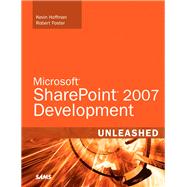Kevin Hoffman wrote his first line of code more than 21 years ago. When he received his first computer, a Commodore VIC-20, he became addicted immediately and has been writing code and learning as much about programming and the art of software development ever since. He has worked in many industries writing applications for the .NET Framework since the original 1.0 release, and, more recently, has been involved in development for the .NET Framework 3.0 and SharePoint 2007. He is currently a Research Developer for Liquidnet Holdings, one of the largest global institutional equities brokers, working on many varied technologies, including the .NET Framework and SharePoint 2007.
Rob Foster is an enterprise architect in Nashville, Tennessee. He began writing code at the age of 10 when he purchased his first computer, a Tandy TRS-80 Color Computer 2, with money that he received for his birthday. He graduated from Middle Tennessee State University with a BBA in Computer Information Systems and holds several certifications, including MCSD, MCSE, MCDBA, and MCT. In 2000 with the PDC bits in hand, Rob founded the Nashville .NET Users Group (http://www.nashdotnet.org), which is a charter member of INETA. He has been writing and designing .NET applications since version 1.0, as well as has been implementing SharePoint solutions since SharePoint 2001. In his spare time, Rob enjoys writing books and articles relating to SharePoint and .NET. Rob lives in Murfreesboro, Tennessee, with his wife, Leigh, and two sons, Andrew and Will.








